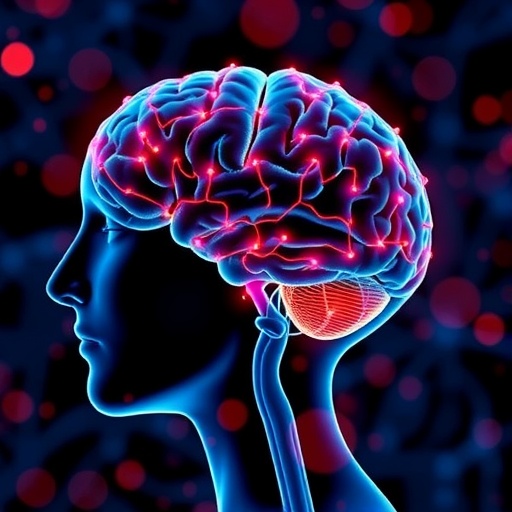In a groundbreaking study published in npj Parkinson’s Disease, researchers have illuminated the neural underpinnings of apathy and its self-awareness in individuals with Parkinson’s disease (PD). This research uncovers critical insights into how patients perceive their own motivational deficits, offering new avenues for therapeutic interventions and a nuanced understanding of neuropsychiatric symptoms in this debilitating disorder.
Apathy, characterized by diminished motivation and reduced goal-directed behavior, is a pervasive non-motor symptom in Parkinson’s disease, significantly affecting quality of life. Despite its prevalence, apathy’s relationship with patients’ awareness of their own motivational state—so-called apathy self-awareness—remained poorly understood until now. This latest study bridges that gap by identifying the neural circuits that correlate not only with apathy but also with how patients perceive or misperceive this condition.
The research team, led by Conn, Suzuki, and Jin, employed advanced neuroimaging techniques alongside clinical assessments to examine patients diagnosed with Parkinson’s disease. Through sophisticated brain connectivity analyses, they traced abnormalities in specific networks, particularly those involving the fronto-striatal circuits critical for motivation, executive function, and self-monitoring. These findings underscore how disruptions in these integrative networks contribute to both apathy symptoms and altered self-perception.
One of the pivotal revelations of the study is the dissociation between apathy severity and its self-awareness. Some patients exhibited profound apathy but lacked insight into their diminished motivation, highlighting a phenomenon akin to anosognosia observed in other neurological conditions. This lack of self-awareness poses formidable challenges for clinical management, as patients may not report apathy or seek interventions, complicating symptom detection and treatment adherence.
Intriguingly, the neuroimaging data revealed that reduced connectivity between the anterior cingulate cortex and the ventral striatum—a hub known for reward processing and motivation—was instrumental in both apathy manifestation and impaired self-awareness. This connectivity deficit potentially disrupts the brain’s capacity to internally monitor motivational states, leading to a blunted experiential understanding of apathy.
Beyond structural and functional connectivity, the study also engaged in in-depth phenotypic profiling. By integrating neuropsychological assessments, it delineated how cognitive deficits, especially in executive functioning, interplay with apathy and its awareness. Executive dysfunction appeared to exacerbate both apathy levels and deficits in self-monitoring, suggesting a compounding effect where impaired cognitive control undermines motivational self-reflection.
The ramifications of these findings are multifold. Clinically, recognizing the neural signature underpinning apathy and its self-awareness gap enables neurologists and psychiatrists to devise more tailored treatment plans. For instance, interventions that target fronto-striatal connectivity through neuromodulation or pharmacological means could restore motivational circuits and enhance patient insight.
Moreover, these insights advocate for routine incorporation of apathy self-awareness evaluations in Parkinson’s patient assessments. Incorporating patient self-report alongside caregiver observations and objective measures can help identify those at risk of alienation from their symptomatology, thus promoting more holistic management approaches.
The scientific importance of this study extends into the broader field of neurodegenerative and psychiatric disorders where apathy is prevalent. By elucidating the neural basis for diminished insight into motivational deficits, it opens parallels with conditions like Alzheimer’s disease, frontotemporal dementia, and major depressive disorder, where motivational and self-monitoring systems are similarly compromised.
Methodologically, the study exemplifies the power of combining multimodal neuroimaging—such as resting-state fMRI and diffusion tensor imaging—with clinical scales tailored for apathy and self-awareness. This integrative approach not only enhances the granularity of brain-behavior correlations but also advances precision neurology by linking specific neural alterations to nuanced behavioral phenotypes.
From a neuroscientific perspective, the delineation of fronto-striatal dysconnectivity as a central thread weaves together decades of research implicating these circuits in motivation, reward, and self-regulation. It reinforces the conceptualization of apathy as a disruption in goal-directed behavior stemming from impaired integration across motivation, cognition, and introspection networks.
Future research inspired by this study could investigate longitudinal trajectories of apathy self-awareness in Parkinson’s patients. Understanding how these neural and behavioral markers evolve through disease progression and treatment response could unlock dynamic biomarkers to track and predict clinical outcomes.
Additionally, exploration of therapeutic strategies—ranging from cognitive-behavioral therapy modified to accommodate insight deficits, to novel neuromodulatory approaches aimed at restoring fronto-striatal connectivity—could transform apathy from an intractable symptom into a manageable target.
This seminal work also has implications for caregiver support and education. Awareness of the dissociation between apathy and its self-awareness can guide caregivers in recognizing subtle motivational declines and compensating when patients lack insight, reducing frustration and improving care quality.
In summation, the study by Conn, Suzuki, Jin, and colleagues represents a vital advance in Parkinson’s disease research. By dissecting the neural correlates of apathy and its self-awareness, it paves the way toward precision interventions that address both the motivational deficits and the profound challenges surrounding patient insight. This dual focus is essential for enhancing quality of life and functional outcomes in a disorder that impacts millions worldwide.
As Parkinson’s disease continues to challenge clinicians and researchers, findings such as these underscore the critical importance of understanding not only the clinical manifestations but also the neural mechanisms that shape subjective experience. The ability to self-assess apathy and motivation has profound implications not just for treatment but for how patients live with and adapt to their illness.
With this new knowledge, the neurodegenerative disease community stands poised to refine diagnostic criteria, improve patient engagement, and innovate targeted therapies that rescue both motivation and self-awareness from the shadows cast by Parkinson’s disease. This research exemplifies the union of neuroscience, clinical insight, and patient-centered care that drives progress in the fight against complex brain disorders.
Subject of Research: Apathy and self-awareness of motivational deficits in Parkinson’s disease and their neural correlates.
Article Title: Apathy self-awareness and its neural correlates in Parkinson’s Disease
Article References:
Conn, H., Suzuki, H., Jin, Z. et al. Apathy self-awareness and its neural correlates in Parkinson’s Disease. npj Parkinsons Dis. 11, 319 (2025). https://doi.org/10.1038/s41531-025-01168-9
Image Credits: AI Generated
DOI: https://doi.org/10.1038/s41531-025-01168-9




